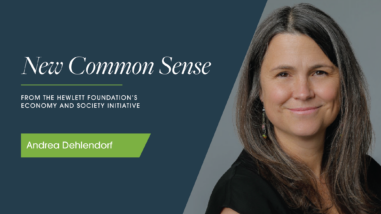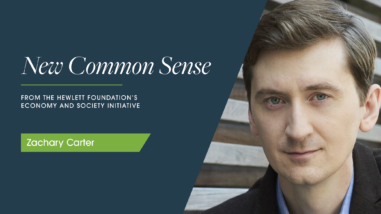Racial justice, neoliberalism, and the climate crisis

However, we’re seeing troubling signs of retreat from the progress we’ve made thus far in ensuring racial justice remains front and center in the effort to address the climate crisis. While much attention has been focused on the Biden Administration’s Justice40 Initiative, which aims to deliver at least 40% of the benefits from federal investments in climate and clean energy to disadvantaged communities, a pivot to regulatory action and other policies focused directly on greenhouse gas (GHG) emissions is likely in 2022 and beyond. There is a lot at stake with this pivot given the limits moderate Democrats have placed on public investment and legislative ambition when it comes to climate, as illustrated by the Clean Electricity Performance Program being struck from the Build Back Better legislative framework.
A renewed push for neoliberal policies, such as cap-and-trade, that focus on engineering markets instead of directly limiting the emissions of greenhouse gases and co-pollutants, will likely lead to racial equity being deprioritized once again. From a movement perspective, the overarching concern with clinging to a neoliberal approach is clear: Neoliberalism has ensured less regulation and more power for markets since the 1980s,reinforcing racial disparities such as Black-white wealth gaps, housing and school segregation, and, most acutely for frontline communities, disproportionate exposure to air pollution and other environmental harms. To cite just three examples of the latter:
- Black people are exposed to particulate matter (soot) at a rate that is 54 percent higher than that of the whole population. The Black-white racial gap in pollution exposure is much larger than the gap between those living in poverty and those with higher incomes. Race, more than income, is the most significant demographic factor in evidence of pollution disparities.
- Nearly 28 percent of those facing health risks from toxic air are Black people, compared to their population share of only 12 percent. Fifty-five percent of those suffering from pollution exposure to ExxonMobil’s 55 facilities are Black people.
- The “pollution advantage” enjoyed by white people is stark. Black and Latinx people are exposed to roughly 60 percent more pollution than they produce, while white people are exposed to 17 percent less pollution than they produce.
Clean energy deployment and benefits will not be equitable, especially for people of color, in a market-driven transition designed to privatize the benefits and socialize the costs of market activities causing the climate crisis as well as the harms caused by co-pollutants. Environmental justice (EJ) has long been in conflict with market policies such as cap-and-trade, which aims to drive down the cost of pollution abatement for polluters. The EJ critique is essentially that such policies, by eschewing direct regulation of polluting facilities, effectively give polluters the right to choose where and when their pollution will be addressed. If it costs polluters less to “offset” their emissions, rather than lower them, the most polluted communities could end up worse off or “last in line” for pollution reductions. Furthermore, these policies could worsen existing disparities in pollution exposure rooted in regulatory policies – such as zoning and permitting – that create what are sometimes described as “pollution hotspots.” California’s cap-and-trade policy has been a case in point: after three years of the policy, more than half of covered facilities actually increased their emissions, and most were in or near low-income communities of color.
Remediation of pollution hotspots has been a central concern of EJ advocates who have fought for decades to establish stronger regulation of polluting facilities. But that concern is often swept aside, even in recent policy fights. For example, the above-noted Clean Electricity Performance Program would have provided financial incentives for utilities to green their energy portfolios by procuring more clean energy at a set rate year over year, without any attention to the geographic distribution of pollution or additional incentives for prioritizing pollution hotspots. As Lew Daly and Elizabeth Yeampierre argue in Grist, low-income Black people face the highest risk of death from particulate pollution emitted by power plants, and clean energy policies should directly address this pollution where it is concentrated. Policies that effectively leave regulatory decision-making in the hands of powerful market actors like utilities may create new or additional pollution risks for frontline communities. Daly and Yeampierre give a straightforward reason:
“[U]tilities procure the electricity they sell to customers from many different types of power generators; some are much dirtier than others and closer to densely populated areas. A sector-wide transition from dirty to clean electricity overall could result in significant variation in co-pollutant reductions, perpetuating or even worsening pollution exposure in specific places.”
Further, in many cases federal definitions of clean or renewable energy include combustible sources that contribute to local pollution, such as biomass.
To be racially just, GHG mitigation cannot only be about reducing atmospheric carbon. Rules and policies for GHG mitigation should not be “co-pollutant neutral” but rather should be designed to have the effect of reducing local pollution where it is most prevalent. If the Biden Administration seeks to develop new power plant rules to reduce GHG emissions of the electricity sector, for example, any related trading mechanisms should be structured to ensure that the most polluted communities benefit the most from local air quality improvements related to greening electricity.
Our vision of what is possible in domestic climate policy has come a very long way since market policies first took hold in the climate debate more than a decade ago, most importantly because the climate movement’s center of gravity has shifted into alignment with racial justice since 2020. However, we still have a ways to go. Racial justice must be central to investment and regulatory policy, otherwise any clean energy transition will risk reproducing and worsening existing racial inequities. Utilities, power plants, and other polluting facilities should not have the discretion afforded by market-based policies informed by outdated, neoliberal thinking. In a world where rapidly and comprehensively reducing GHG emissions is necessary, not only to protect the future for all people but also to repair the damage of fossil fuel combustion and other pollution where it exists today, we must ensure any approach is rooted in racial justice.



